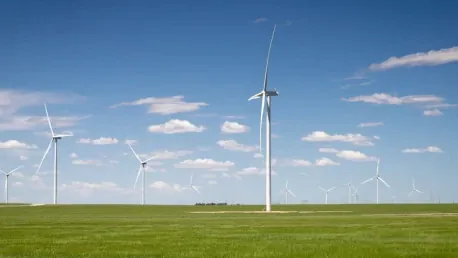The U.S. power grid is at a crucial juncture, driven by the imperative to transition from fossil fuels to clean energy to address the climate crisis. This shift in energy production is essential to combat escalating climate concerns while accommodating a rising demand for electricity, notably attributed to the advent of artificial intelligence (AI). The North American grid, recognized as the world’s largest machine, is, however, mired in a complex web of overlapping jurisdictions across the United States, leading to a decentralized control system primarily managed by state utility commissions. These commissions wield significant influence over the decision-making processes that will define the future of energy infrastructure and, consequently, the nation’s ability to meet climate goals.
The Role of State Utility Commissions
Each state operates its unique regulatory body, variously named public utilities commissions, public service commissions, corporation commissions, or even railroad commissions, to oversee utilities within their territories. These commissions possess the mandate to approve or deny utility companies’ expenditures, including the rates collected from customers. Despite robust efforts by federal policymakers to promote clean energy through incentives, the ultimate success of transitioning to renewable energy lies in the hands of these state-level regulators. Without their endorsement and enforcement, the construction of clean energy platforms could be significantly hampered.
The composition and selections of commissioners hold substantial sway over the regulatory approach toward clean energy. Some states appoint their commission members, usually by the governor; however, ten states allow voters to directly elect commissioners. Notably, eight states conducted elections for at least one commissioner seat on November 5, 2024. The significance of these elections cannot be overstated as they will influence whether states continue to rely on fossil fuels or pivot to renewable energy sources.
Key State Elections and Their Implications
Specific state elections and their implications are indicative of broader trends and pressures within energy policy. In Alabama, Twinkle Cavanaugh, a Republican incumbent committed to conservative governance, runs unopposed for reelection as president of the three-member Public Service Commission. Meanwhile, in Arizona, nine candidates contest three seats on the five-member Corporation Commission, where the current Republican majority has controversially approved new gas plants and high rate hikes. This election has the potential to shift the commission’s control.
In Louisiana, three candidates vie for the seat of a retiring moderate Republican. The outcome will be crucial as it could lead to policy changes tied to the Green New Deal and renewable energy. Montana sees stiff competition for three out of five seats on the Public Service Commission, with discussions focusing on the climate impacts of its decisions, driven by voter dissatisfaction with recent rate hikes. Furthermore, Nebraska and North Dakota have heated debates over significant projects like the controversial Summit Carbon Solutions pipeline.
The Historical Context of Utility Regulation
An understanding of the local history and the regulatory framework established by Samuel Insull in the early 20th century provides context for the current state of utility regulation. Insull’s vision of centralized power and natural monopolies led to the institutionalization of public utility commissions to oversee and regulate this sector. Although riddled with corruption and financial fraud in its early days, reformed legislation under President Franklin D. Roosevelt sought to dismantle monopolistic practices, ushering in a more regulated and diversified utility environment.
Today, the influence of utility commissions extends beyond rate approval to significant factors like energy equity and renewable mandates. Different regions of the United States have varying structures, with the Southeast’s monopolistic utilities contrasting with the more liberalized, competitive markets seen elsewhere. Regional transmission organizations (RTOs) or independent system operators (ISOs) play a critical role in these markets, impacting both the type and cost of energy through real-time price auctions and economic incentives.
The Power of Utility Commissions in Renewable Energy
Utility commissions wield considerable power, especially in the context of renewable energy. They can influence policies related to rooftop solar, essential for integrating residential solar energy into the grid. In states like California, utility commission decisions have drastically impacted solar installation rates. Meanwhile, in areas served by the federally managed Tennessee Valley Authority (TVA), different dynamics are at play due to the agency’s lack of a profit motive.
Throughout the U.S., no single regulatory structure is deemed perfect. Each has its strengths and weaknesses, influencing how rapid and equitable the energy transition can be. In states with vertically integrated monopolies, the absence of competitive markets can limit the adoption of new, particularly renewable, technologies. Conversely, RTO-managed regions may face planning and reliability challenges due to their decentralized nature.
Enhancing Public Engagement and Transparency
Efforts to improve public engagement with utility commissions highlight the complexity of making these bodies more transparent and accountable. Strategies include forming advisory councils, starting public initiatives, and setting up federal offices to involve citizens in regulatory processes. Governors and state legislatures play a role by appointing commissioners who are sympathetic to their causes and passing laws to broaden utility regulations to include equity issues.
As energy needs change and the shift to renewable energy grows more urgent, it’s clear that the role of utility commissions needs re-evaluation and reform. States like Massachusetts and Connecticut showcase the potential for these commissions to lead in integrating equity and environmental concerns into their regulatory frameworks. These states have introduced innovative measures such as stakeholder compensation and performance-based regulation, pointing a way forward for other regions facing similar issues.
Given the decentralized nature of utility regulation in the United States, progress towards a clean energy future varies significantly and is heavily influenced by local politics. Decisions made by these commissions on rates, new infrastructure projects, and long-term energy plans are pivotal to how quickly and effectively the country can cut greenhouse gas emissions. Overcoming these challenges requires ongoing advocacy, public involvement, and regulatory innovation to ensure a clean and equitable energy transition across all states.









